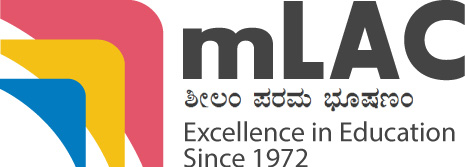Researcher's Awareness
FAKE JOURNALS AND BOGUS PUBLISHERS
Dear Researchers
This year, mLAC has received a number of claims for publications that are published in journals like "Wulfenia (http://www.multidisciplinarywulfenia.org/index.html) and Sylwan - English Edition (http://sylwan.ibles.org/) or Jökull journal (http://www.jokulljournal.com/).
None of them are indexed by Web of Science. We have checked these journals via Thomson Reuters.
Please note that a real Sylwan journal is http://sylwan.ibles.waw.pl/pls/apex/f?p=105:1:0; not Sylwan-English Edition http://sylwan.ibles.org/
Also, real Wulfenia Journal is http://www.landesmuseum.ktn.gv.at/210226w_DE.htm?seite=15;
The fake journals publish the papers only on their website and charge a handsome amount (540 USD for Wulfenia and 440 USD for Sylwan)as publication fees by your credit card.
To avoid publishing with fake journals, if you read a warning in that link, e.g the warning on www.wulfeniajournal.at; www.wulfeniajournal.com; www.multidisciplinarywulfenia.org reads that they are not the official websites of the journal “Wulfenia: Mitteilungen des Kärntner Botanikzentrums” published by the Regional Museum of Carinthia. These websites criminally take over the identity of the official journal. They fraudulently use false informations, a false editorial board and false publication requirements to encourage authors to submit articles and to transfer page fees to a bank account in Yerevan (Armenia). Namely, Wulfenia http://www.multidisciplinarywulfenia.org/index.html is a fake journal.
Similarly, Jökull Journal is not covered by SCI-E. This is a fake journal as well. If you receive e-mails from them, see their e-mails as a spam.
How to avoid predatory publishers
To distinguish legitimate from predatory journals, here are some useful sources of information—none of which are adequate on their own:
1. Is the journal or publisher listed in Beall’s List ( Prepared by Jeffrey Beall , an American librarian at Auraria Library, and Associate Professor at the University of Colorado, Denver). If so, it should be avoided, as this “blacklist” is regularly updated and specifies criteria for identifying predatory journals and publishers
2. If claiming to be an open access journal, is the journal in the Directory of Open Access Journals (DOAJ)? This is a sort of “whitelist,” and journals here must meet specific criteria.
3. Is the publisher a member of recognised professional organisations that commit to best practices in publishing, such as the Committee on Publication Ethics (COPE); the International Association of Scientific, Technical, & Medical Publishers (STM); or the Open Access Scholarly Publishers Association (OASPA)?
4. Is the journal indexed? Do not accept the journal’s claims about being indexed. Instead verify these claims by searching for the journal in databases such as PubMedCentral (free) or the Web of Science (requiring subscription).
5. Is the journal transparent and following best practices when it comes to editorial and peer review processes, governance, and ownership? Are there contact details for the journal and its staff (email, postal address, working telephone number)? Reputable journals have a named editor and editorial board comprised of recognized experts. Are the costs associated with publishing clear? Credible journals do not ask for a submission fee. Many bona fide open access journals require a publication charge, but this is levied after acceptance and through a process separate from the editorial process.
ANother article to read -
https://publicationethics.org/news/identifying-fake-journals




